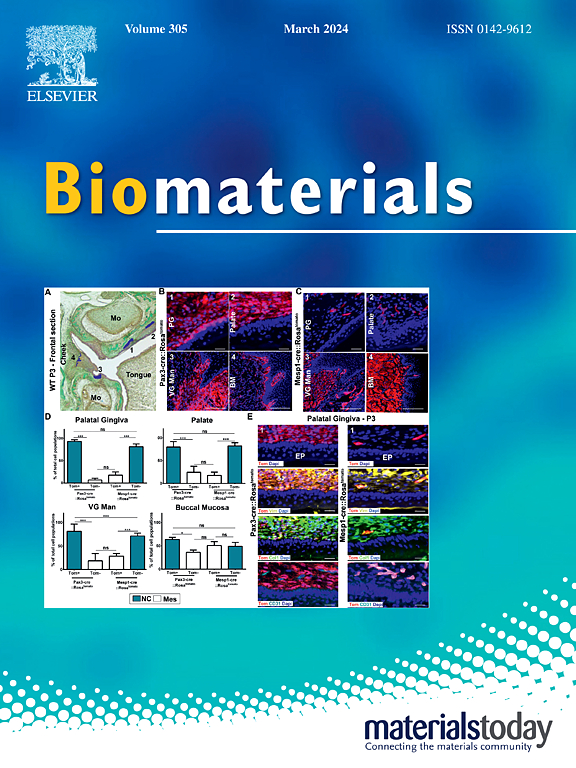用于荧光图像引导肿瘤手术的平移造影剂
IF 12.8
1区 医学
Q1 ENGINEERING, BIOMEDICAL
引用次数: 0
摘要
目前,手术干预仍然是治疗大多数实体瘤的基础。在过去的几十年里,即使有快速的术中组织病理学评估,肿瘤手术切缘阳性的总体率也停滞在15%到60%之间。与头颈、脑癌、乳腺癌、肺癌、前列腺癌和胃肠道癌等各种癌症相关的局部复发率增加和预后不良与阳性切缘有关。最近,在精确手术概念的推动下,荧光造影剂在手术领域的术中应用取得了重大进展。术中荧光分子成像在手术中起指导作用,为外科医生提供可见的荧光图像。在临床应用中,荧光造影剂可以清晰地描绘肿瘤边界,具有较高的识别能力和手术过程中的实时指导。此外,它们可以定位淋巴结转移灶,检测小转移灶,并在手术中识别关键解剖结构,从而降低附带损伤的风险。理想的手术引导技术应具有低辐射、高灵敏度、高分辨率、可调视场、快速成像等特点。增强荧光的组织穿透和分子探针的靶向能力对于提供更全面的肿瘤相关数据至关重要。此外,筛选和识别其他肿瘤生物标志物及其更多相应的靶向分子数据对于增强分子成像的特异性至关重要。最后,研究和使用更广泛的近红外荧光染料,提高生物相容性和成像能力,是设计用于术中导航的合成探针的关键。开发新型、高效、安全的荧光造影剂是当前医药研发的一个重要方向。本文章由计算机程序翻译,如有差异,请以英文原文为准。
Translational contrast agents for use in fluorescence image-guided tumor surgery
Currently, surgical intervention remains the foundation in curing most solid tumors. Over the past few decades, even with rapid intraoperative tissue pathology assessment, the overall rate of positive surgical margins for tumors stagnated between 15 % and 60 %. The increased local recurrence rates and poor prognoses associated with various cancers, such as head and neck, brain, breast, lung, prostate, and gastrointestinal cancers, are linked to positive margins. Recently, driven by the concept of precise surgery, significant advancements have been reported in the intraoperative use of fluorescent contrast agents in the field of surgery. Molecular imaging via intraoperative fluorescence plays a guiding role in surgery, providing surgeons with visible fluorescent images. In clinical applications, fluorescent contrast agents can clearly delineate tumor boundaries, offering high recognition capacities and real-time guidance during surgery. Additionally, they can localize lymph node metastases, detect small metastatic lesions, and identify critical anatomical structures during surgery, thus reducing the risk of collateral damage. An ideal surgical guidance technology should lack radiation and display a high sensitivity and good resolution and an adjustable field of view, with rapid imaging. Enhancing the tissue penetration of fluorescence and targeting capacities of molecular probes are critical in providing more comprehensive tumor-related data. Additionally, screening and identifying other tumor biomarkers and more of their corresponding targeted molecular data are essential in enhancing the specificity of molecular imaging. Finally, the investigation and use of a wider range of near-infrared fluorescent dyes with improved biocompatibilities and imaging are critical in designing synthetic probes for application in intraoperative navigation. The development of novel, efficient, safe fluorescent contrast agents is a critical direction in current pharmaceutical research and development.
求助全文
通过发布文献求助,成功后即可免费获取论文全文。
去求助
来源期刊

Biomaterials
工程技术-材料科学:生物材料
CiteScore
26.00
自引率
2.90%
发文量
565
审稿时长
46 days
期刊介绍:
Biomaterials is an international journal covering the science and clinical application of biomaterials. A biomaterial is now defined as a substance that has been engineered to take a form which, alone or as part of a complex system, is used to direct, by control of interactions with components of living systems, the course of any therapeutic or diagnostic procedure. It is the aim of the journal to provide a peer-reviewed forum for the publication of original papers and authoritative review and opinion papers dealing with the most important issues facing the use of biomaterials in clinical practice. The scope of the journal covers the wide range of physical, biological and chemical sciences that underpin the design of biomaterials and the clinical disciplines in which they are used. These sciences include polymer synthesis and characterization, drug and gene vector design, the biology of the host response, immunology and toxicology and self assembly at the nanoscale. Clinical applications include the therapies of medical technology and regenerative medicine in all clinical disciplines, and diagnostic systems that reply on innovative contrast and sensing agents. The journal is relevant to areas such as cancer diagnosis and therapy, implantable devices, drug delivery systems, gene vectors, bionanotechnology and tissue engineering.
 求助内容:
求助内容: 应助结果提醒方式:
应助结果提醒方式:


